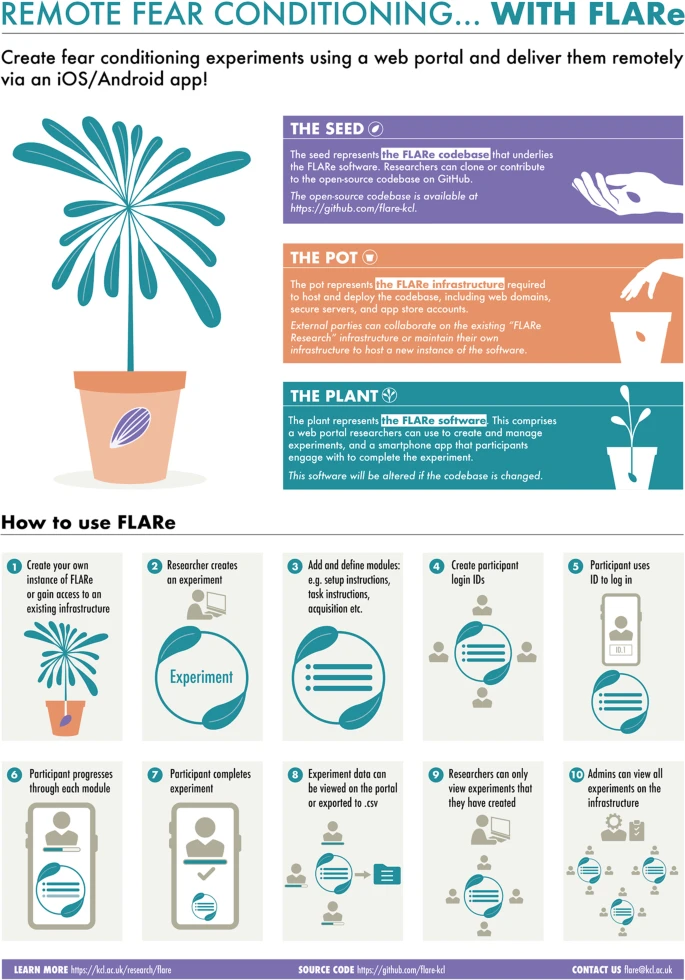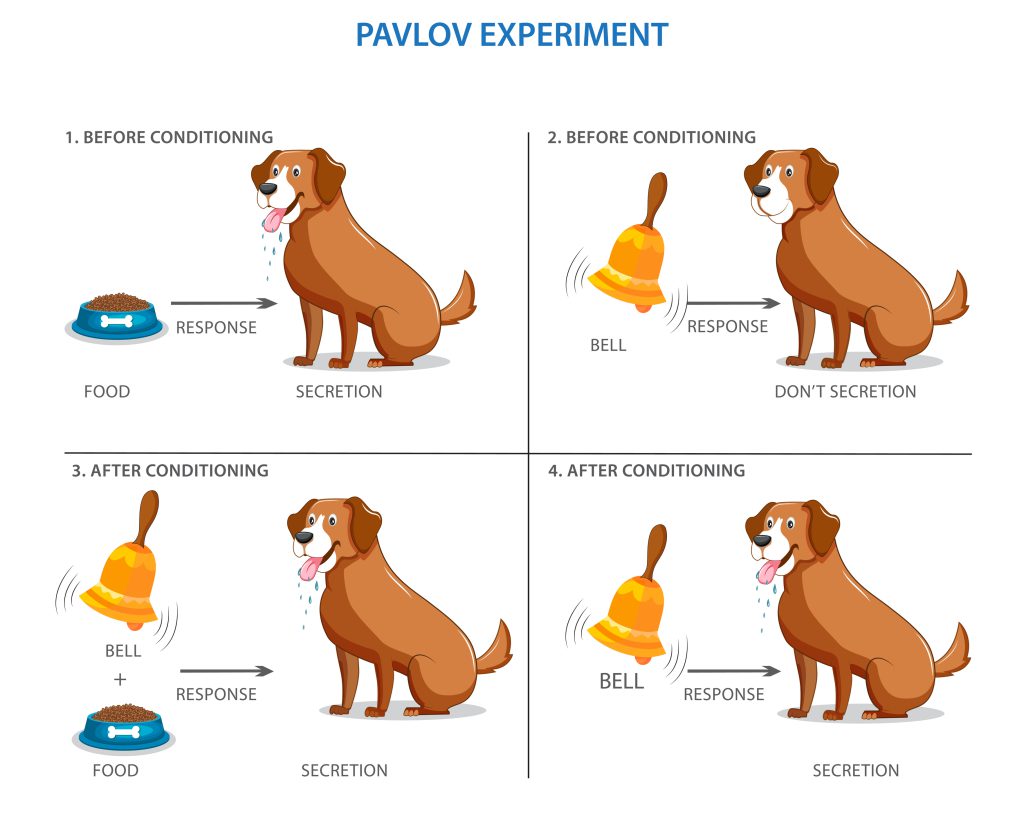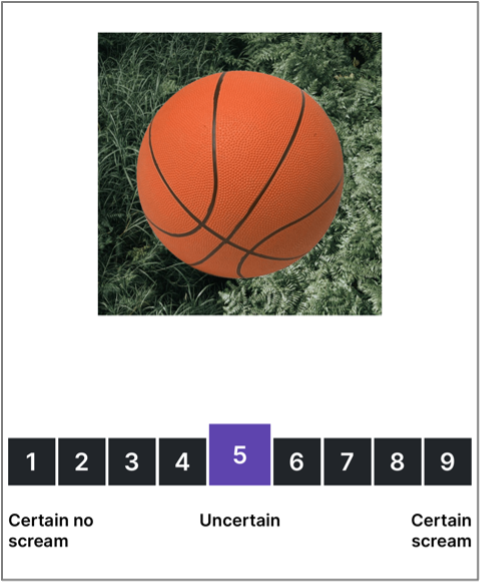Once only possible in lab based experiments, we are now able to test people’s learning of fear via their smartphones, facilitating bigger experiments and better data.
F stands for FLARe. And FLARe stands for Fear Learning and Anxiety Response. It is the name of our bespoke software, which we use to remotely deliver experiments to many participants, using only their smartphones.
In previous blogs, we have discussed fear, the emotion which keeps us safe from harm. But it is also an emotion which can become problematic, preventing us from engaging in certain aspects of life, through specific phobias (look out for our blog on this subject in the spring). It is also an emotion central to the development of anxiety disorders, discussed in more depth here.
People’s ability to acquire fear can be tested experimentally, through a process called conditioning. Pavlov conditioned animals to salivate to the sound of a bell ringing. But hunger is only one emotion that can be conditioned in such a way. Another is fear, through a fear conditioning paradigm.
Similar to Pavlov’s experiments, modern fear conditioning paradigms expose participants to an object, like a coloured shape, alongside an unpleasant stimulus, such as an electric shock or loud noise. Like a child learning that the cooker is hot by burning their hand, here through a similar learning process, participants associate the coloured shape with an unpleasant stimulus. When they are later shown the coloured shape alone, they demonstrate a fear response. This can be measured through physiological changes such as sweating or increases in heart rate, or though asking the participant to rate their fear.
In contemporary fear conditioning paradigms, this association is later extinguished, through a reversal of the process. The coloured shape is shown without the delivery of the unpleasant stimulus, and eventually the association is broken. Usually, this paradigm takes place within a laboratory. This allows for greater control of participant behaviour and reduces the likelihood of random events interfering with the experiment.
A drawback of this classical approach is the time and expense required to facilitate data collection from participants in person. Often this causes small sample sizes, and samples which don’t represent society at large – it’s not uncommon to see psychology experiments in the literature having used only a small sample of 20 or so undergraduate students.
However, with the advent of the internet, and the ubiquity of connected devices, psychological experiments have started to move online. Experimental paradigms can now be remotely delivered to thousands of participants, in a fraction of the time and cost required for in-lab experiments. We designed and built FLARe with this principle in mind. 
Participants we invite can download the FLARe app to their smartphones. They then participate in the same paradigm as they would in the lab, modified to be compatible with remote usage. For the unpleasant stimuli, we use a loud noise played through the participants headphones. To measure the fear response, we ask them to rate how much they expected the loud noise, in addition to other questionnaires.
A key question, is whether the remote paradigm, delivered by FLARe, replicates results of classical, in person fear conditioning. We therefore set out to validate the app, testing the same people in the lab one week, and via the app in the second week. Pleasingly, we reported that the two methods of delivery produced consistent results, indicating the remote paradigm produces reliable data. (Purves et al., 2019).
Following validation, we were then able to use the app to collect fear conditioning data from participants in our ongoing genetics studies, such as the Twins Early Development Study (TEDS). Indeed, the rationale behind wanting a remotely delivered paradigm, was to facilitate fear conditioning data collection within the large sample sizes needed in genetics research. We have used FLARe data to demonstrate that genetic factors contribute to fear development (Purves et al. 2021), and that anxious people show different fear conditioning responses to non-anxious (McGregor et al. 2020).
To further highlight the main advantage of FLARe, whilst it took 15 months to acquire the approximately 250 participants for the in-lab validation study, it took only three to remotely gather data from the 2000 participants in a later study.
We hope that other labs will choose to use FLARe to acquire similar data. For this reason, we are providing access to our FLARe infrastructure to other researchers. We have also made the software open-source, with the code available on our GitHub (https://github.com/flare-kcl). This will open the possibility for future meta-analytic studies, where more data from many studies can be combined to reinforce findings.
We will continue to develop FLARe, along with our industry partner, Torchbox (https://torchbox.com). And we are looking into new ways to process and analyse the data collected, with the aim of understanding the genetic mechanisms underlying the development of fear, and anxiety disorders.
Read our paper introducing the latest version of FLARe here.
References:
Purves, K. L., Constantinou, E., McGregor, T., Lester, K. J., Barry, T. J., Treanor, M., Sun, M., Margraf, J., Craske, M. G., Breen, G., & Eley, T. C. (2019). Validating the use of a smartphone app for remote administration of a fear conditioning paradigm. Behaviour Research and Therapy, 123, 103475. https://doi.org/10.1016/j.brat.2019.103475
Purves, K. L., Krebs, G., McGregor, T., Constantinou, E., Lester, K. J., Barry, T. J., Craske, M. G., Young, K. S., Breen, G., & Eley, T. C. (2021). Evidence for distinct genetic and environmental influences on fear acquisition and extinction. Psychological Medicine, 1–9. https://doi.org/10.1017/S0033291721002580
McGregor, T., Purves, K. L., Constantinou, E., Baas, J. M. P., Barry, T., Carr, E., Craske, M. G., Lester, K. J., Palaiologou, E., Breen, G., Young, K. S., & Eley, T. C. (2021). Large‐scale remote fear conditioning: Demonstration of associations with anxiety using the FLARe smartphone app. Depression Anxiety, 38, 719–730. https://doi.org/10.1002/da.23146



